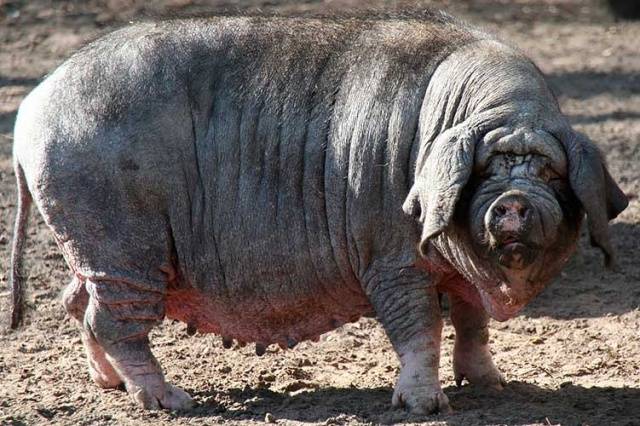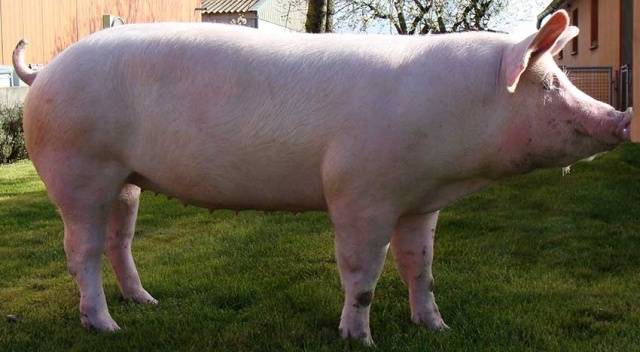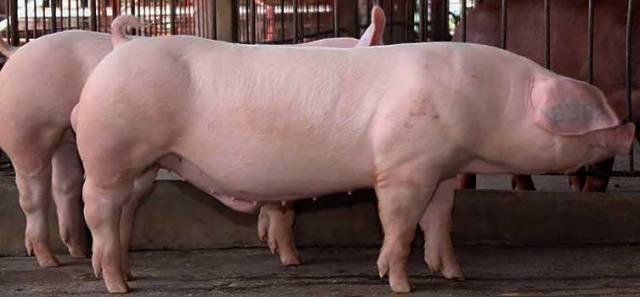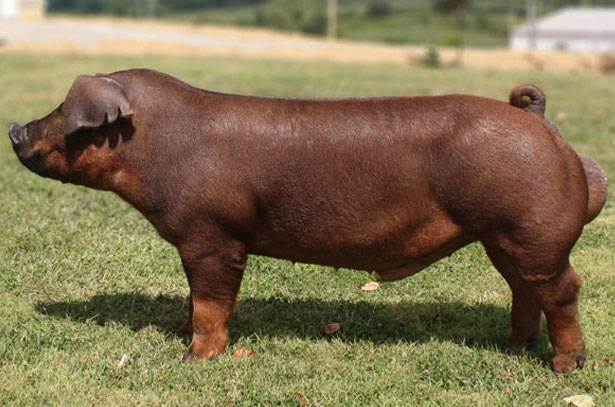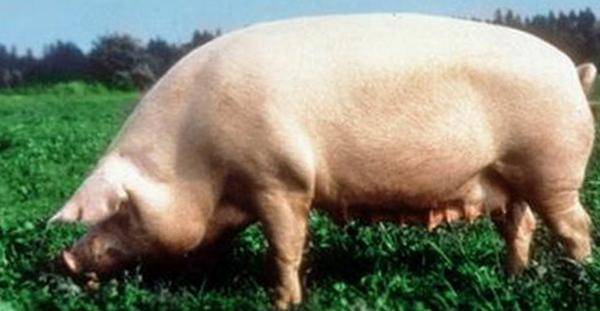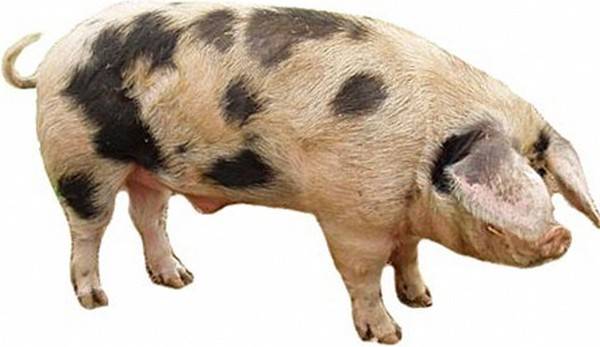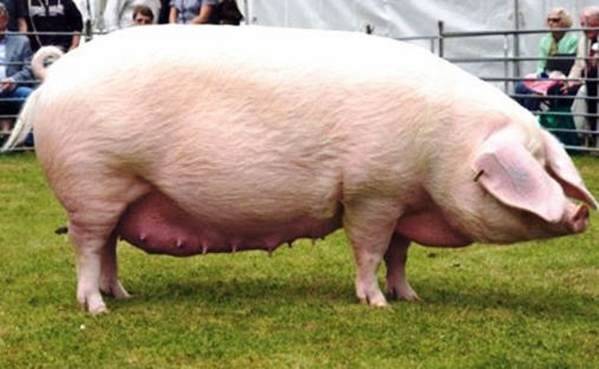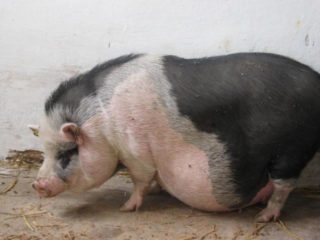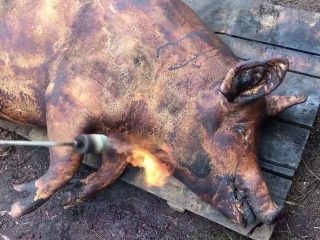Content
Separation of home pig breeds into groups of different directions began, probably, from the time of the domestication of the wild boar. Lard, which gives a lot of energy with a small volume and minimal costs for its production, is necessary for residents of the northern regions. "Lard with vodka" appeared for a reason. Both products are very high in calories and have a warming effect after consumption.
The peoples who have lived beyond the Arctic Circle since ancient times are forced to consume fat literally in kilograms to maintain life. Probably everyone noticed that in winter you constantly want to eat something more solid than a cabbage salad. This happens because the body needs energy for heating. For this reason, in the northern countries, pig breeds were valued, capable of quickly gaining not even meat, but lard.
The people of southern countries do not need that much fat. The main cooking fat in the Mediterranean region is vegetable oil. Lard is not valued there and there is no desire to use it either. In ancient Rome, lard, in general, was considered the food of slaves, because you need a little of it, and a slave can work on it a lot. Therefore, in southern countries, meat breeds were preferred.
Pigs do not live far beyond the Arctic Circle; walruses and seals replace them there. But after all, fat can be consumed not only by the Eskimo, but also by a person who does not have the money to buy meat. In addition, lard was used to make cheap candles. Therefore, greasy pig breeds were in demand and were bred not only in the very northern regions, but also in Central Europe. These breeds today include:
- meishan;
- big black;
- hungarian mangalica.
A good example of how to feed the maximum number of people with one pig is the Chinese meishan. In China, fat is more valuable than meat, so the meishan was taken out in order to get high-energy fat from it.
With the growth of prosperity and the development of technology, mankind's need for lard has decreased, but there is a need for high-quality meat. And greasy pig breeds tried to reorient towards meat production.
A striking example of this reorientation is the large white breed of pigs, in which the lines of all three directions are present: greasy, meat-greasy and meat. Originally this breed was bred as greasy.
Only the Berkshire belongs to the European meat and greasy pig breeds. All other breeds of this trend were bred in Russia, and almost all of them were already in Soviet times and by no means by means of folk selection. Of course, this has its own explanation. The Soviet Union was a huge country with very different climatic zones. Pigs of any type of productivity were in demand in it. In addition, the post-revolutionary and post-war devastation made itself felt. The population had to be fed, and the pigs were the earliest of all domesticated mammals.
Foreign European-American bacon breeds of pigs are:
- duroc;
- Hampshire;
- pietrain;
- Tamworth;
- landrace.
As for Russia, the situation here is interesting.
Since the large white breed of pigs includes lines of all three directions, today the largest number of all pigs bred in the territory of the Russian Federation is this breed.
This breed has excellent productive characteristics.Thanks to the work of Soviet breeders, the former English Great White (Yorkshire) can now be distinguished into a separate Russian breed.
The Russian version of the big white is notable for its decent size: a boar up to 360 kg, a sow up to 260 kg. She is more adapted to Russian conditions, she has a stronger constitution and is very prolific. Fortunately for other Russian beef breeds, the Great White, due to its demanding diet and maintenance, is more suitable for breeding in the factory conditions of pig farms than for private farmsteads.
Bacon pig breeds present in Russia
Bacon pigs are distinguished by a long body, shallow chest, poorly developed front part and powerful hams.
The meat pig grows quickly, gaining up to 100 kg of live weight by six months. The percentage of meat in the carcass of a slaughtered pig is from 58 to 67%, the fat yield is from 21 to 32%, depending on the breed.
Landrace
One of the best representatives of meat type pigs. Therefore, although the Landrace is a "foreign" breed, it is actively bred in private farmsteads. It is typical for Landrace to have an exaggeratedly long body, reaching 2 m in a boar. A kind of bench on short legs.
With the general impression of a graceful and light pig, the weight of the Russian Landrace is the same as the weight of the Russian large white.
Duroc
Also "foreign" meat pigs. Bred in the USA and is by far the most widespread breed in the world. Initially, the Durocs were one of the greasy breeds, but later the productive direction was changed due to intra-breed selection and a small amount of blood from Tamworth pigs.
Durocs are rather large animals up to 180 cm long and weighing up to 250 kg.
They are distinguished by good fertility, bringing an average of 8 piglets per litter. But piglets grow slowly and therefore purebred Durocs are practically not bred in Russia.
They are used to obtain pedigree hybrids for sale. The possibility of breeding a hybrid to obtain marketable milk is also being studied.
Russian meat breeds of pigs suitable for private pig breeding
In the Soviet years, systematic work was carried out to breed meat pigs adapted to the Russian climate. As a result, it was possible to breed pigs capable of living, successfully multiplying and producing products even in Siberia. True, the overwhelming majority of these breeds belong to the meat-greasy direction.
Soviet meat pigs include: Urzhum, Don meat, Poltava meat, Estonian bacon and early maturing meat.
Urzhumskaya
Bred Urzhumskaya in the Kirov region, improving the local lop-eared pigs of the great white and further breeding offspring.
The result is a large pig with a long body, strong legs and meaty forms. The weight of Urzhum boars is 320 kg, of pigs - 250 kg. Urzhum pigs of white color. Sows are very fertile, producing up to 12 piglets per farrow. Young growth at 6 months reaches a slaughter weight of 100 kg. These pigs are bred in the Kirov region and the Republic of Mari-El.
Early ripening meat (SM-1)
Work on this breed began shortly before the collapse of the Union. The project was large-scale; more than 70 collective farms in Russia, Ukraine, Moldova and Belarus took part in the breeding of early maturing meat. The territory allotted for the project stretched from the western borders of the USSR to Eastern Siberia and from the Baltic to the Volga steppes.
The project had no analogues. 19 research institutes and universities of the country took part in it. They created an early ripening meat pig, crossing many of the best foreign and domestic pig breeds.
After the collapse of the Union, all livestock was divided into three parts, taking into account each type that arose on the territory of different republics. Early ripening meat was registered in Russia (1993), in Ukraine - Ukrainian meat (1992), in Belarus - Belarusian meat (1998).
In this way, you can sell any pig under the brand name CM-1.
In the presence of only a description of the breed and its characteristics.
Early ripening meat - a pig of a strong constitution with powerful hams. Boars weigh up to 320 kg with a body length of 185 cm, sows - 240 kg / 168 cm. SM-1 has good adaptability to different climatic conditions, early maturity and growth intensity, as well as a good response to feed.
Piglets SM-1. Age 1 year:
The features of the breed are: high milk production, accelerated achievement of 100 kg by piglets, 64% meat yield.
Donskaya meat (DM-1)
Intra-breed type of North Caucasian pigs. This line of pigs was bred in the 70s by crossing local Caucasian pigs with Pietrain boars.
From the North Caucasian progenitors, the pigs took good adaptability to pasture conditions.
Donskaya meat surpasses its North Caucasian progenitors in the following indicators:
- ham increased by 15%;
- 10% higher meat content in the carcass;
- 15% less subcutaneous fat thickness.
Important! Sows in this line must not be overfeeded. An overweight sow does not tolerate pregnancy and farrowing well.
Representatives of DM-1 are mated no earlier than 9 months, provided that they have already gained 120 kg of live weight. With early mating, the offspring will be weak and few in number.
Estonian bacon
The direction of the breed is clear even from the name. Estonian bacon pig was bred by crossing local Estonian livestock with Landrace, large white and German short-eared white pig.
Outwardly, the Estonian bacon still looks like a meat-greasy breed. She lacks the long body characteristic of beef breeds, the belly is lowered and better developed in front. Estonian bacon gives out powerful hams.
The pigs are large. Their weight is similar to that of pigs of other meat breeds. A boar weighs 330 kg, a sow 240. Their body length is also similar to other meat pigs: 185 cm for a boar and 165 cm for a sow. Since fat is lighter than muscle, it is likely that Estonian bacon has a higher percentage of fat than other breeds of this trend.
An Estonian bacon sow brings 12 piglets for farrowing. Six months later, the piglet reaches a weight of 100 kg.
Estonian bacon is widespread in the Baltic countries and Moldova. There are livestock in the north-western regions of Russia, to the climatic conditions of which the Estonian pig is well adapted. But there is no breeding work with Estonian bacon in Russia.
Conclusion
In fact, in addition to those discussed, there are many other bacon pig breeds. To choose a pig to your liking and suitable for the climatic conditions of the region of residence, the question of breeds needs to be studied deeper.
